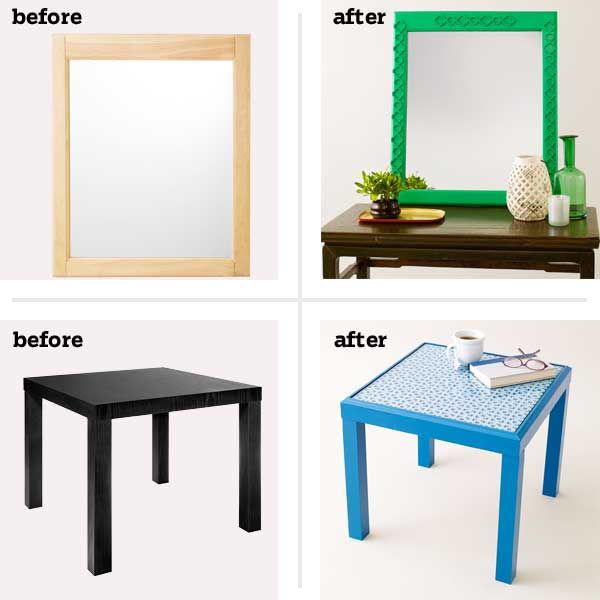
Furniture overlays offer an exciting way to breathe new life into plain or outdated pieces without breaking the bank. Made of lightweight materials, such as medium-density fiberboard (MDF) and PVC, you can adhere these intricately cut panels and trim pieces to almost any surface with a compatible glue.
In our guide, we’ll explore how to upgrade furniture with overlays, from choosing the right materials to applying them like a pro.
What Are Furniture Overlays?
Furniture overlays are decorative elements applied to the surface of furniture to enhance its appearance. These thin, lightweight panels or trim pieces come in various designs, from intricate patterns to simple geometric shapes.
Overlays offer numerous advantages for those looking to update their furniture. Understanding these benefits can help you decide if this technique is right for your project.
One of the primary benefits of using overlays is the significant cost savings compared to purchasing new, high-end furniture. With a modest investment in overlays and some DIY effort, you can achieve a custom, expensive look for a fraction of the price. This approach allows you to update multiple pieces or experiment with different styles without committing to costly new furniture.
Overlays also provide endless possibilities for personalization. You can mix and match different designs, combine multiple overlays, or even create custom patterns to suit your unique taste. This flexibility allows you to tailor your furniture to complement your home’s decor or create statement pieces that stand out.
Types of Overlay Materials
There are several types of materials that you can use to create furniture overlays, each with its own advantages.
- Medium-density fiberboard (MDF): Affordable and easy to paint, MDF overlays are popular for many DIY projects
- PVC: Durable and moisture-resistant, PVC overlays are ideal for furniture in humid environments
- Wood: Natural wood overlays provide an authentic look and feel, perfect for traditional or rustic styles
- Resin: Lightweight and detailed, resin overlays offer intricate designs for a high-end appearance
- Metal: For a modern or industrial touch, metal overlays can add a unique texture and sheen to furniture
Choosing the Right Overlays for Your Furniture
If you’re going for a certain look, you’ll need to choose the right overlay for your furniture. When making this decision, consider both the style of your furniture and your overall decor.
When choosing overlays, think about the existing style of your furniture and how you want to enhance or change it. For example:
- For a modern piece, consider clean lines and geometric patterns.
- Traditional furniture might benefit from ornate, scrollwork designs.
- Mid-Century Modern styles pair well with simple, organic shapes.
- Textured overlays that mimic wood grain can complement rustic pieces.
Your chosen overlays should also harmonize with your room’s overall aesthetic. Consider these factors:
- Color scheme: Select overlays that you can paint to match or complement your room’s colors
- Existing patterns: Choose designs that coordinate with patterns in your rugs, curtains, or wallpaper
- Room function: Opt for simpler designs in busy areas and more intricate patterns in formal spaces
- Scale: Ensure the size and intricacy of the overlay pattern suit the size of your furniture and room
Tools and Materials for Applying Overlays
You’ll need the right tools and materials for your project. Here’s what you’ll need to get started.
- Primer
- Paint
- Brushes and rollers
- Sandpaper
- Painter’s tape
You’ll also need an adhesive that’s compatible with both your overlay material and furniture surface.
- Wood glue: Ideal for MDF and wood overlays on wooden furniture
- Construction adhesive: Strong and versatile for heavier overlays
- Epoxy: Best for metal or resin overlays on non-porous surfaces
- Spray adhesive: Useful for large, flat overlay applications
Step-By-Step Guide To Applying Furniture Overlays
Follow these steps to successfully apply overlays to your furniture.
Step 1: Prepare Your Furniture Surface
- Clean the furniture thoroughly to remove dirt and oils.
- Sand the surface lightly to create a better bonding surface for the adhesive.
- Wipe away dust with a tack cloth.
- Apply primer if needed, especially if you plan to paint the piece a significantly different color.
Step 2: Measure and Cut Overlays
- Measure the area where you’ll apply the overlay carefully.
- Mark your measurements on the overlay material.
- Use a sharp utility knife or saw (depending on the material) to cut the overlay to size.
- Dry fit the cut overlay to ensure a proper fit before applying adhesive.
Step 3: Apply Adhesive and Attach Overlays
- Apply adhesive to the back of the overlay or the furniture surface, following the product instructions.
- Carefully position the overlay on the furniture.
- Press firmly to ensure good contact and remove any air bubbles.
- Wipe away any excess adhesive immediately with a damp cloth.
- Allow the adhesive to dry completely according to the manufacturer’s recommendations.
Step 4: Painting and Sealing
- Once the adhesive is fully dry, lightly sand the entire piece to ensure a smooth surface.
- Apply primer if you haven’t already, especially if painting a light color over a dark surface.
- Paint the furniture and overlay with your chosen color, applying thin, even coats.
- Allow each coat to dry fully before applying the next.
- Once the final coat is dry, apply a clear sealant for added protection if desired.
Creative Overlay Projects for Different Furniture Pieces
Overlays can transform various furniture pieces. Here are some inspiring ideas to get you started.
Glam up a Plain Dresser
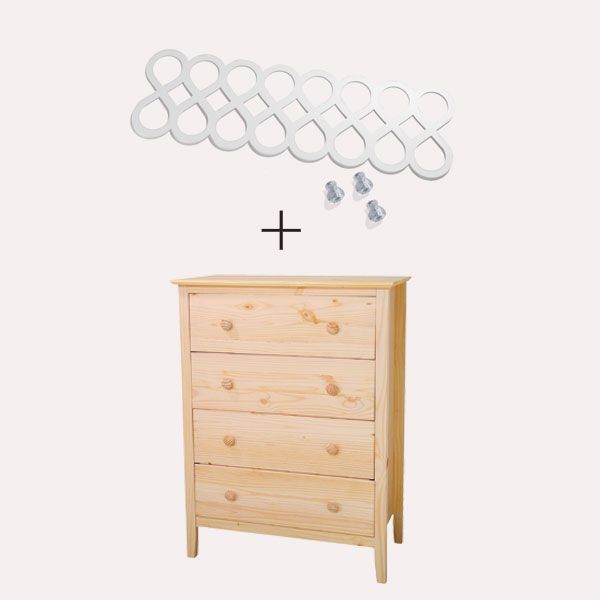
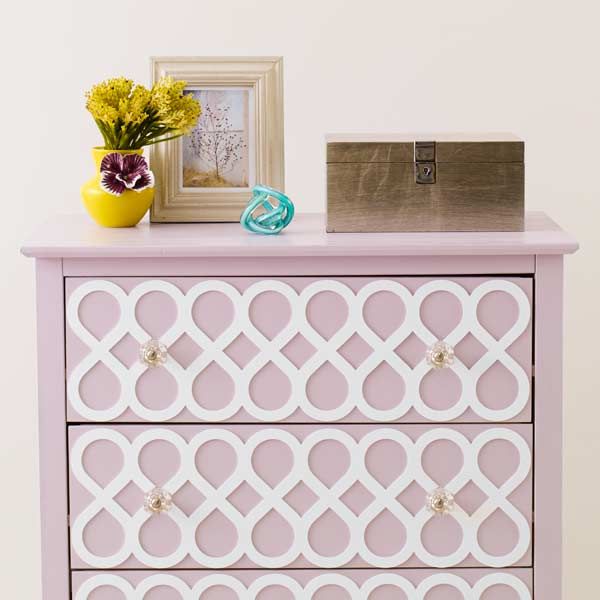
Give a simple pine dresser a Hollywood Regency makeover with custom-sized overlay panels. Apply geometric patterns to drawer fronts and paint the entire piece in a luxurious color like silver mauve for a high-end look.
Add Texture To Mirrors
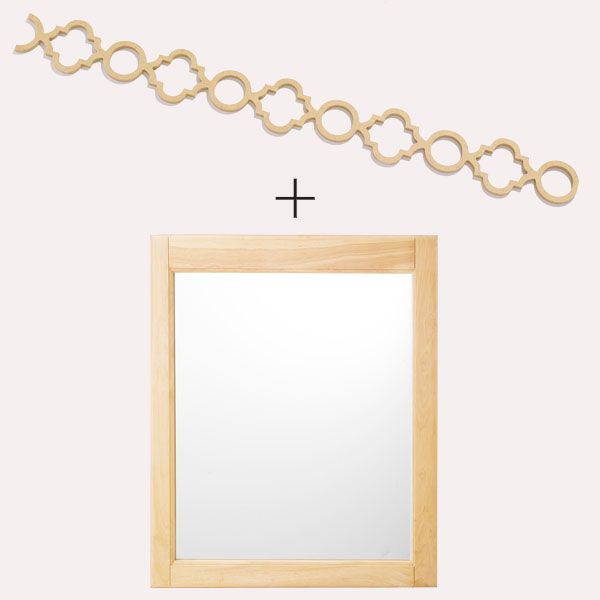
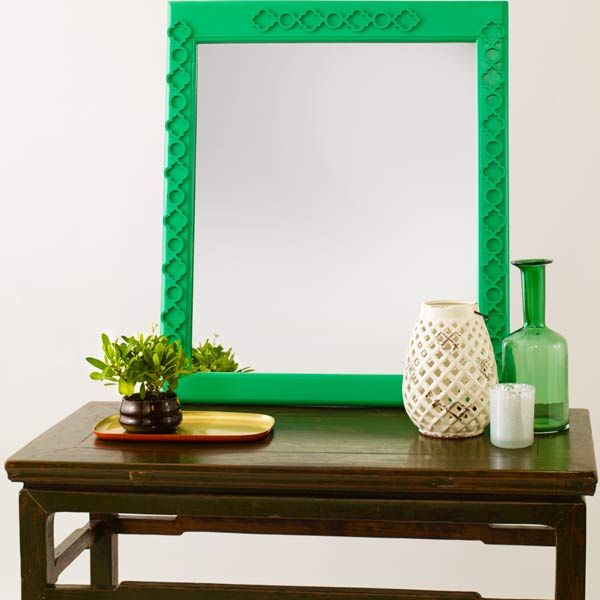
Upgrade a basic mirror by applying trim in a Moroccan tile pattern around the frame. Paint the overlay in a bold color, such as emerald green, to create a striking accent piece for your room.
Transform Side Tables With Dimensional Overlays
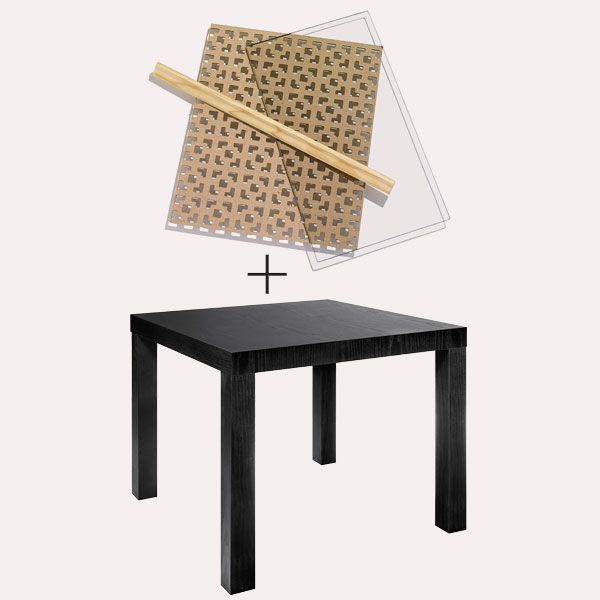

Add depth and interest to a plain side table by applying overlays with raised patterns. Paint the base in one color and the overlay in a complementary shade for a custom, designer look.
Maintaining and Caring for Overlay-Enhanced Furniture
To keep your upgraded furniture looking its best, follow these best practices.
- Dust regularly with a soft, dry cloth to prevent buildup.
- Clean painted surfaces with a mild soap solution when needed.
- Avoid placing overlay-enhanced furniture in direct sunlight to prevent fading.
- Use coasters and placemats to protect surfaces from moisture and heat.
- Touch up paint or sealant as needed to maintain the finish.
Common Overlay Application Issues
Even with careful application, you may encounter some challenges. Here’s how to address common problems:
- Bubbles: If air bubbles form, carefully lift the overlay and reapply, pressing firmly to remove air pockets.
- Peeling edges: Use a strong adhesive designed for your specific materials and ensure the edges are fully adhered.
- Visible seams: Fill small gaps with wood filler or caulk, then sand and paint to blend.
- Paint bleeding: Use high-quality painter’s tape and firmly press it down before painting.
- Uneven surface: Sand between coats of paint and apply thin, even layers for a smooth finish.
Our Conclusion
Whether you’re looking to add glamour to a dresser, texture to a mirror, or dimension to a side table, overlays provide endless possibilities for furniture makeovers without the hefty price tag. With a little patience and attention to detail, you can transform plain or outdated furniture into stunning focal points that reflect your personal style.
